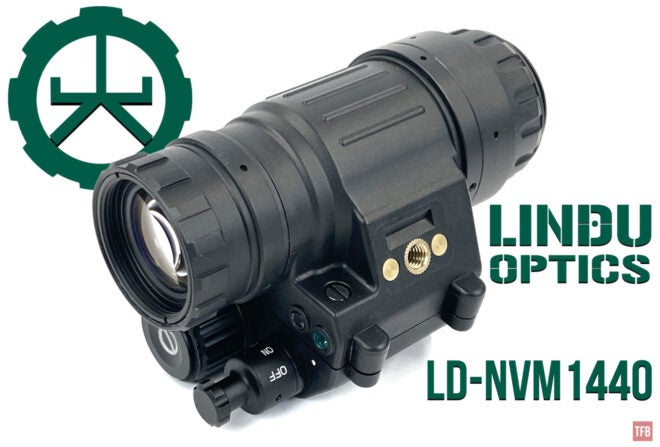Is it Friday Night Lights already? Lucky you! Last week we took a look at my Frankensteined hacked JIM LR which allows me to see farther than ever before with cooled thermal. We switch gears today and take a look at a Chinese copy of a PVS-14 by Lindu Optics. Their LD-NVM1440 has some unique features both good and bad so let’s take a closer look.
Night Vision @ TFB:
- Thales QNVG (Quad Night Vision Goggles) Prototype
- [SHOT 2023] FNL SHOT 2023 Night Vision Etc.
- Friday Night Lights: QTNVG – Panos For The Masses
Lindu Optics Night Vision
I came across Lindu Optics back when I reviewed the QTNVG. Word got around and people started to call them “Lindu Quads” since that was the only place to get them. However, Lindu does not manufacture the housing. It is made by a separate company, another Chinese manufacturer.
Jack, a Sales Engineer of Lindu Optics, reached out last month to see if I was interested in reviewing their PVS-14 which they call LD-NVM1440. Yeah, that is quite a mouthful and hard to memorize. I was intrigued to see how good or bad a Chinese copy of a PVS-14 could be. We have seen good products come out of China like Argus housings and Holosun red dots. While the QTNVG is an affordable way to get your feet wet with quad goggles, the quality of the housing is not that great. But this Lindu PVS-14 is an unknown in the U.S. night vision market. So let’s take a closer look at it.
Lindu LD-NVM1440

At first glance, the Lindu PVS-14 looks like your typical PVS-14, but when you start to take a closer look, it has some differences both good and bad.
Let’s start with the good. All the controls are on the front side of the Lindu PVS-14. Instead of a manual gain knob, the power switch is next to the battery cap.

The power switch is somewhat reminiscent of a PVS-14 rotary switch. However, it has four positions: OFF, ON, IR and AUTO. Unlike a normal PVS-14 power switch, there is nothing stopping you from rotating it past ON straight to IR or AUTO. On a regular PVS-14, you have to pull the switch away from the housing to continue rotating to turn on the onboard IR illuminator. AUTO mode on the Lindu housing is like the QTNVG. They use an onboard light sensor to automatically activate the onboard IR illuminator. This is a neat feature but not really something I have ever needed. I rarely use the onboard IR illuminator on my night vision devices.
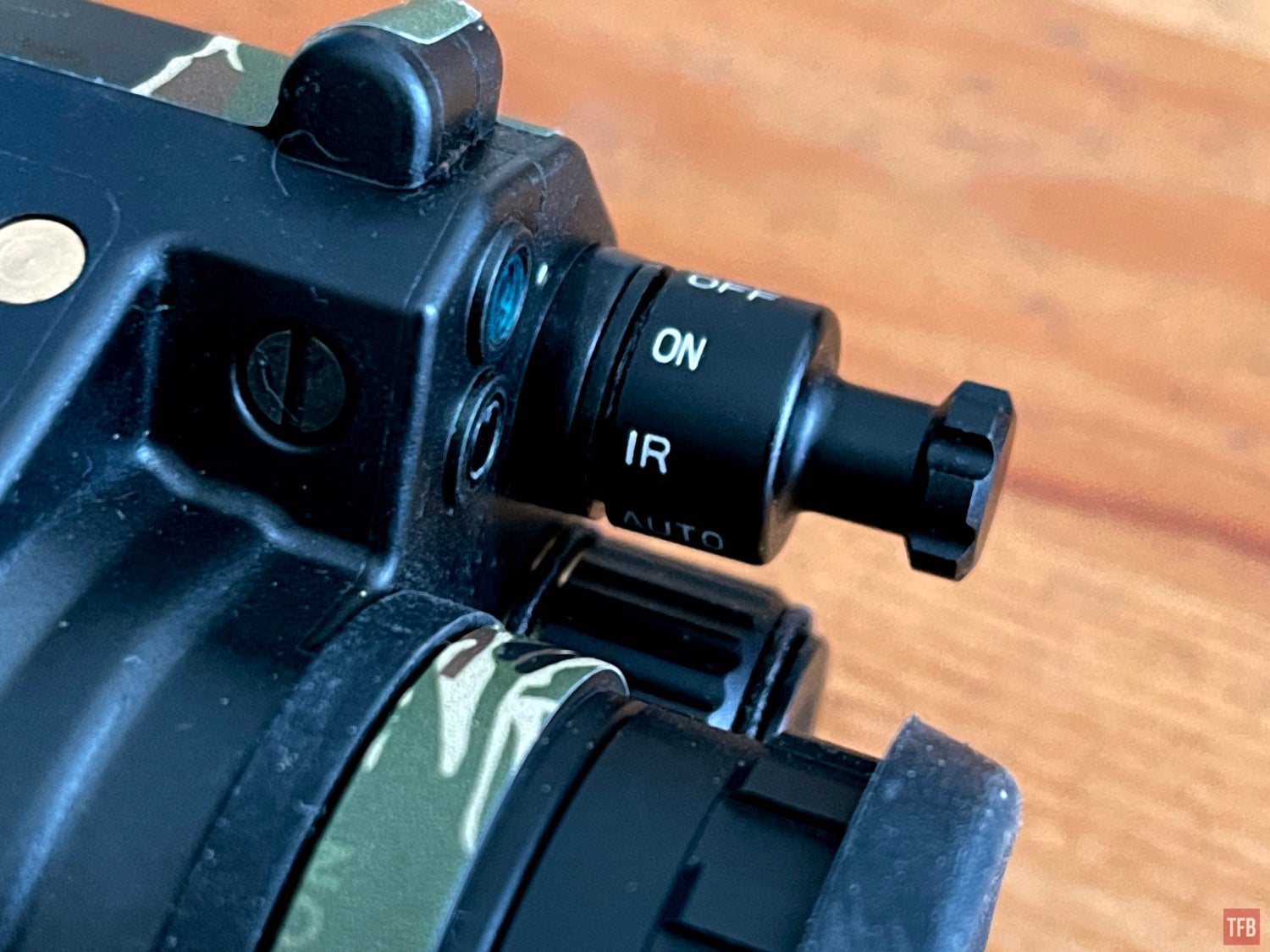
Another upgrade that the Lindu PVS-14 housing has over a regular PVS-14 housing is that it uses a CR123 battery to power it. In fact, it can even handle rechargeable Li-Ion 16340 RCR123 batteries. The battery housing can handle up to 4.2v. With a regular Li-Ion CR123, the run time is 80 hours on a single battery.

The Lindu PVS-14 housing uses 10160 image intensifiers. Unlike a normal PVS-14, the Lindu housing has no manual gain. As I said earlier, there is no manual gain knob and the board cannot even accept the manual gain EGAC of an 11769 (the pigtail for manual gain).


The Lindu LD-NVM1440 came with a bikini-style objective lens cover. You have to position it just right in order to clear the factory J-Arm.

I find it better to flip it inboard rather than out.
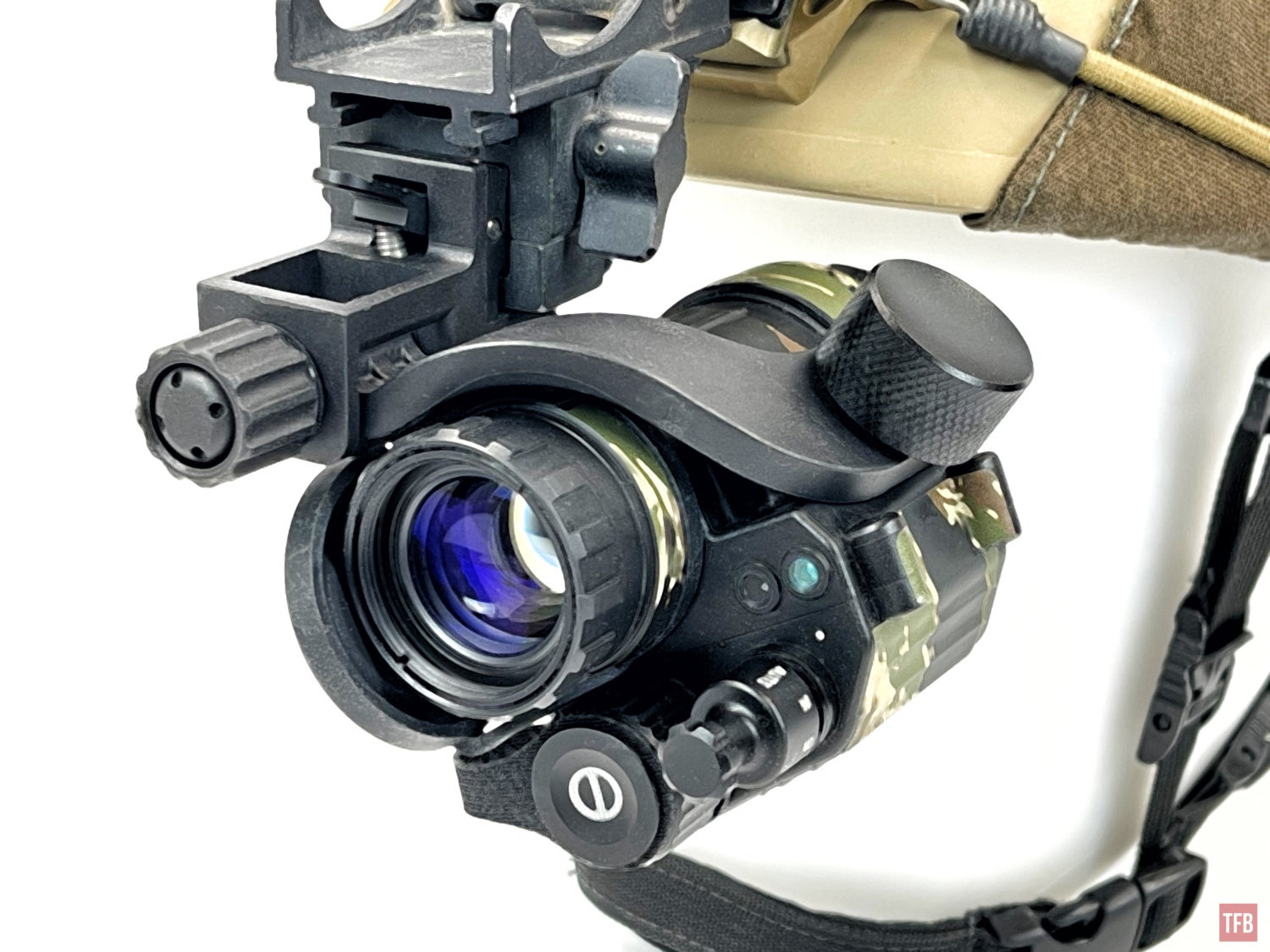
Lindu includes a mount and J-Arm with their LD-NVM1440. It has magnets and reed switches. So when you remove the PVS-14 from the mount, it automatically shuts off. When you insert the J-ARM back into the mount, the monocular turns back on. Even when you flip the mount up, it will shut off the power to the PVS-14 and to my surprise it turns back on when you flip it back down. USGI J-ARMs never turn the PVS-14 back on when you flip it back down. You always have to turn it off and on again.
To my surprise, the housing is lightweight when fully built. A normal PVS-14 is around 12-14 ounces fully built.


The lenses on the LD-NVM1440 are different than standard PVS-14 lenses but they did keep the 30mm threads so you can screw in any accessories you want like eyecup retaining rings and filters.

Here is the LD-NVM1440 with a U.S. eyecup retaining ring.
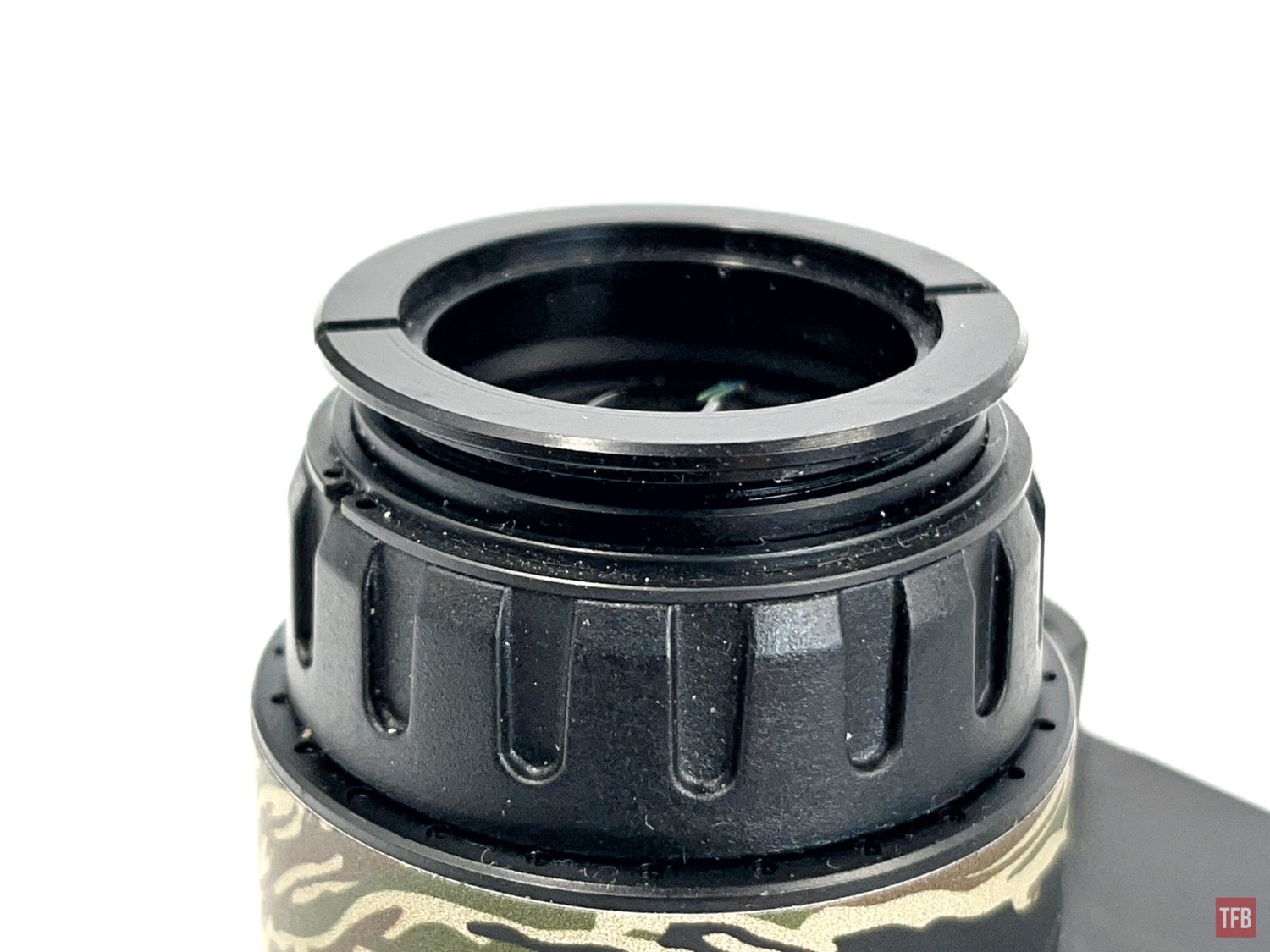

A U.S. L.I.F. can screw into the objective lens. You can also use mil-spec magnifiers.

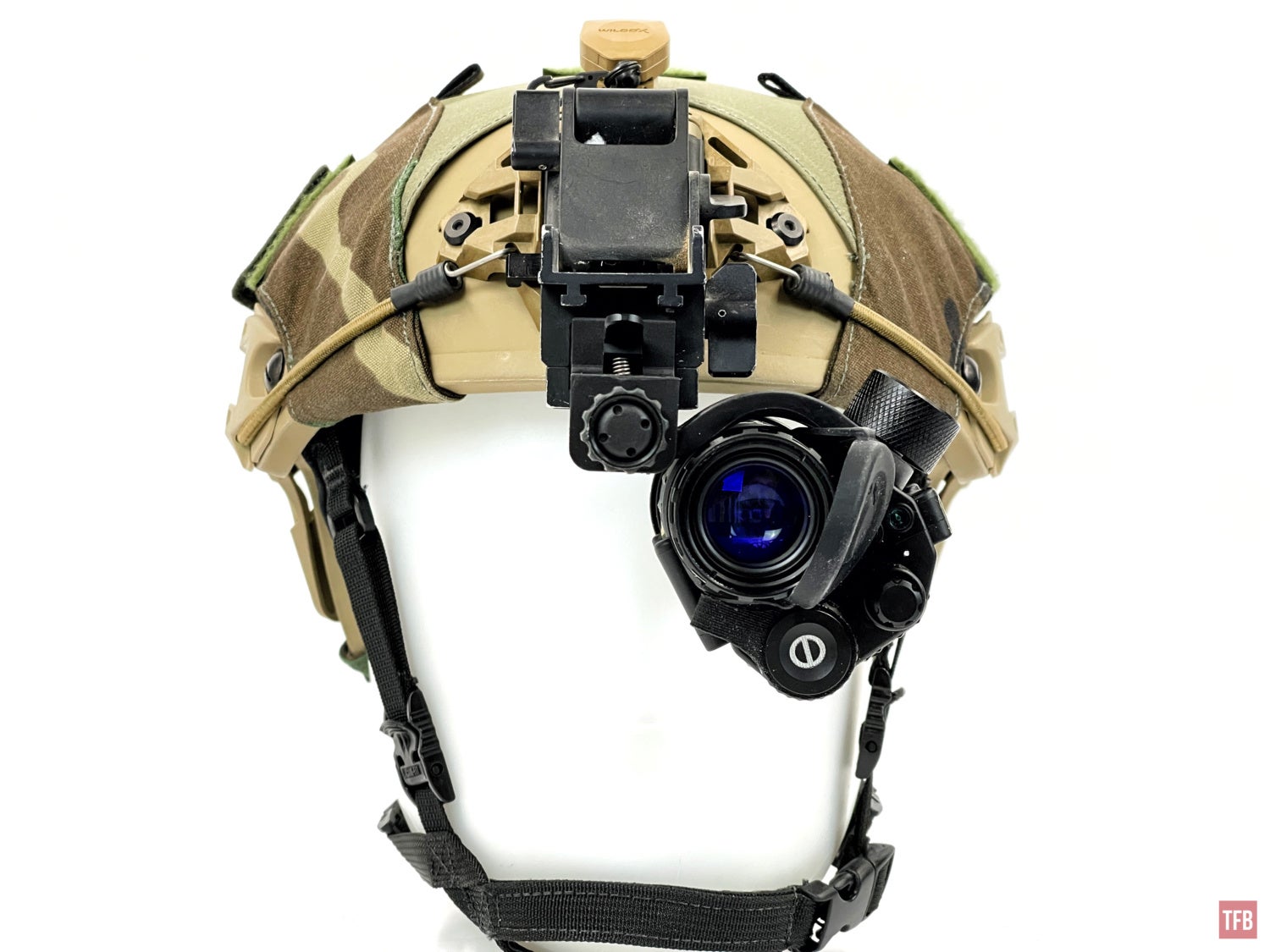
I was able to modify a set of Nocorium PVS-14 wraps to fit the Lindu LD-NVM1440.

Cons With The LD-NVM1440
As I mentioned earlier the LD-NVM1440 has some features/designs that are not so great. When I installed an image intensifier, I had to remove the eyepiece and I immediately noticed the threads were not standard. Also, the outer diameter of the ocular lens and lock ring are smaller than standard PVS-14 eyepieces.

I then removed the objective lens and it too has proprietary threads. They are not multi-start like your typical PVS-14 objectives. The thread pitch is fine. This means you have to turn the objective lens more to go from infinite focus to close focus and back. Normal PVS-14 objectives have a very coarse thread pitch so a 1/4-1/2 turn and you are at close focus.

This makes the Lindu PVS-14 less desirable as it is 100% proprietary. You cannot upgrade to a binocular housing and keep the lenses to use them in said binocular housing. You cannot upgrade the lenses with lighter-weight RPO lenses. If something happens to your objective lens, you have to try and buy a replacement from Lindu Optics since you cannot use standard PVS-14 objectives as a replacement.
The proprietary lenses are not a deal breaker but this next bit can be. I am not sure who designed the LD-NVM1440 but they mirrored the attachment point for the J-ARM. See the image below. The Lindu PVS-14 is on the left and a normal PVS-14 is on the right.

The discrepancy seems so innocuous at first glance that is until you try to use a regular J-ARM. See the image below. J-ARMs have a triangular protrusion that indexes with a matching indentation in the monocular housing. This helps keep the monocular from rotating around the mount screw. Since Lindu has theirs on the wrong side a regular J-ARM will not sit flush.

Another issue is the method of manufacturing. It looks like whoever manufactured this housing used heat set inserts or a press-fit insert for the threads. Normal PVS-14s use a heli-coil so there is more mechanical anchoring of the threads. Less chance of the threads being pulled out with a heli-coil than press or heat-inserted threads.

To top it off, Lindu uses a non-standard thread pitch for their J-ARM mounting hole. Normal PVS-14 threads are 1/4-20 which is the same for camera tripods. So even if they did not mix up the J-ARM indexing indentation, you can’t use a regular mounting screw.
Another issue I found was with their rhino mount. The detent for latching into an NVG shroud on a helmet does not fit my Wilcox shrouds.
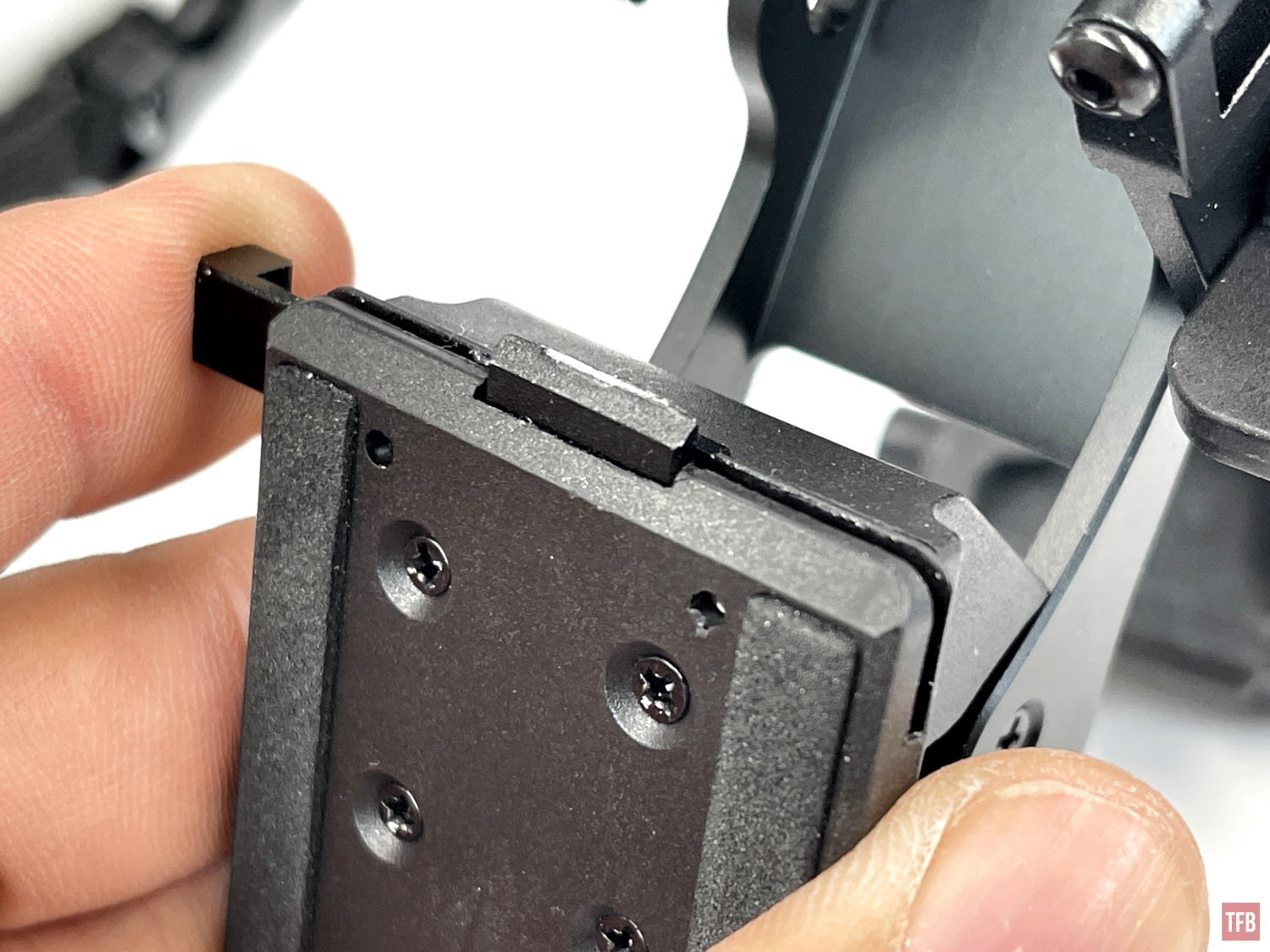

Below you can see the locking tab better. It does not fully retract when you press the release bar. This interferes with standard NVG shrouds. I could try and force it in but it would possibly damage something or it locks in and I will never be able to remove it without causing more damage to it or the shroud.

Here is a Norotos rhino mount and the locking tab retracts all the way when you press the release bar. This allows the mount to sit into the NVG shroud and when you release the locking tab it pokes back out to lock the mount into the shroud.

This causes incompatibility with industry-standard NVG shrouds. I was able to get the mount to fit my Ops-Core bump helmet because it has a plastic molded shroud. But if I cannot use it with a Wilcox shroud, then it will not fit a majority of US helmets. I tried using my Norotos surplus mount and while the Lindu PVS-14 J-ARM did fit, it was loose. Bayonet aka “Horn” interface is not great even with mil-spec parts. That is why people tend to upgrade to dovetail arms and mounts. With the Lindu J-ARM it is very loose and there is a lot of vertical play with the mount. While it would work, it would not work great.
Lindu’s eyecup is an odd design and overly complicated. The rubber eyecup sits over their eyecup retaining ring and there is a thin metal hoop that holds the rubber eyecup on the ring underneath.
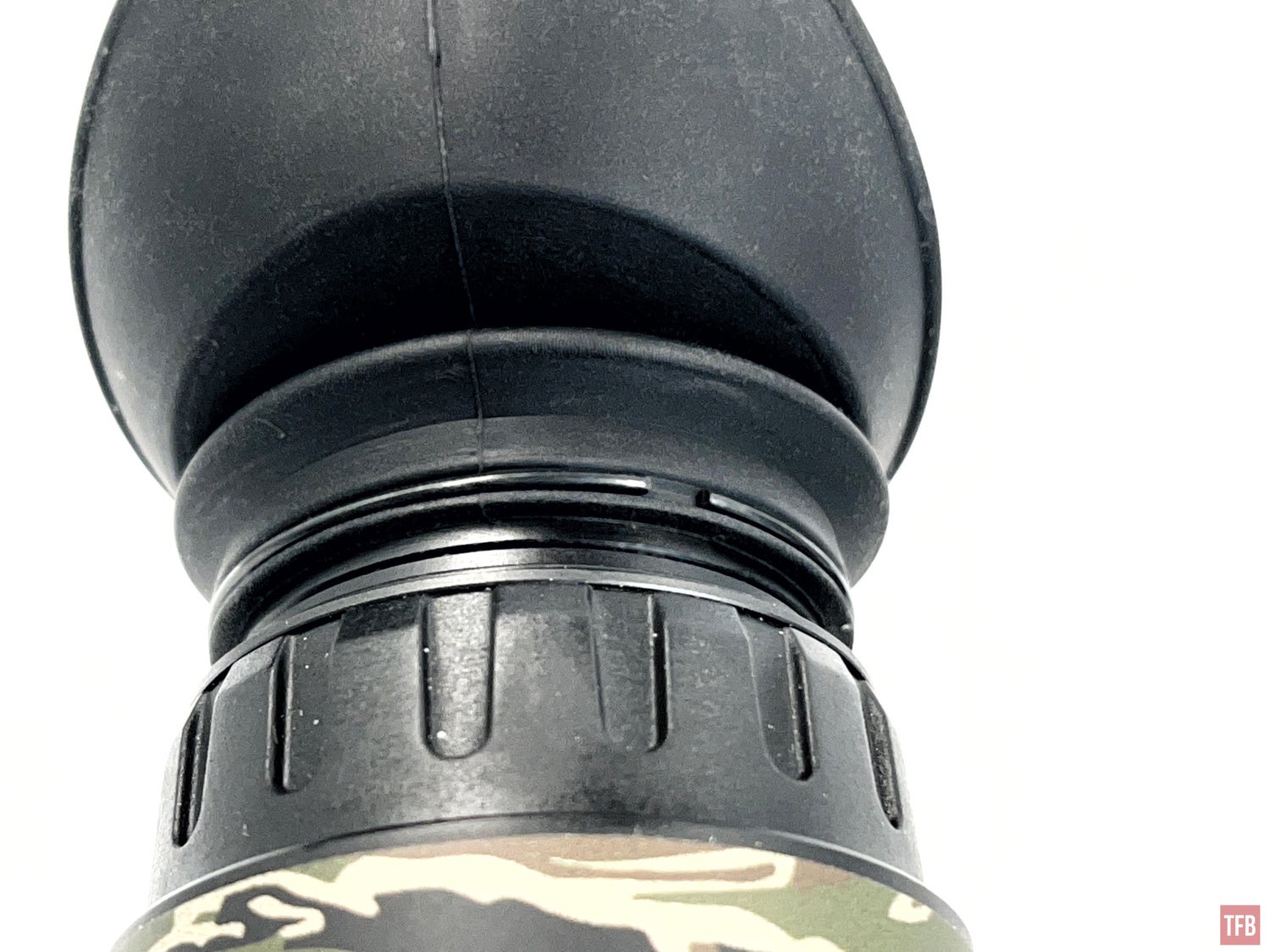
It is not difficult to pull the rubber eyecup off so the metal hoop seems pointless. Getting it back on is not quick nor easy.

Below are the three components for the Lindu eyecup.

It is easier to just install a normal PVS-14 eyecup retaining ring and eyecup. I don’t like using eyecups anyway so this is not really a big issue for me.

Final Thoughts On The Lindu PVS-14
While waiting for the Lindu PVS-14 to arrive, one of the biggest concerns I had was the glass quality. They claim there is no distortion. To my surprise, the lenses are not bad. The eyepiece has a narrow exit pupil and when you shift your eye outside of center, the image gets a little blurry but other than that, no issues.
There are a lot of issues with the LD-NVM1440 housing. The incompatibility with industry-standard components and accessories is a massive deal breaker. Jack told me the reason they went this route was to offer a complete kit to the end user. I think this is short-sighted. This might work in smaller markets where night vision options and accessories are limited, but the U.S. is the biggest consumer of night vision in the world. They are limiting their sales right out the gate. No one will want this housing if they cannot upgrade it or use accessories of their choosing. Bridging this monocular will be less than ideal.
Then there is the price. Lindu wants $1,100 USD for this housing. That is just too expensive. They have priced themselves out of the market when you can get a U.S.-manufactured Carson housing for around $800. I have given Jack my feedback and I hope they reconsider some of their design choices in the future. I realize changing thread pitch and fixing the J-ARM incompatibility would require a mold change and those are not easy nor cheap. China can make good products and while the LD-NVM1440 appears to be made well, it has too many design problems that make it less desirable than domestic options.
 Your Privacy Choices
Your Privacy Choices
